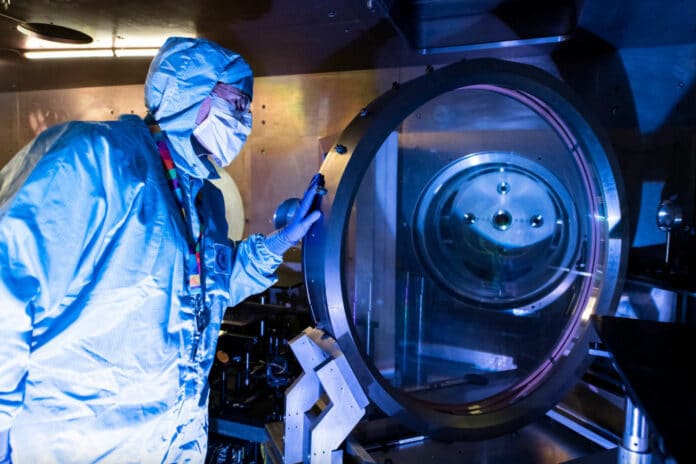The UK Research and Innovation (UKRI) has awarded £85 million ($103 million) to the Science and Technology Facilities Council (STFC) Central Laser Facility (CLF) for a major upgrade, including the construction of the Vulcan 20-20 laser, set to be the most powerful laser in the world. CLF says the laser will be a million, billion, billion times brighter than the Sahara Desert’s brightest sunlight.
Located at the STFC Rutherford Appleton Laboratory (RAL) in South Oxfordshire, the CLF employs a range of lasers to generate plasma – the fourth state of matter, in addition to solid, liquid, and gas.
CLF harnesses the power of lasers for various experiments in areas such as renewable energy research, developing 3D mapping to visualize how COVID infects and damages cells, and inventing a technique to scan the chemical fingerprint of contents inside closed containers, which is currently used in airport screening.
Typically, plasma occurs when normal matter is exposed to extreme conditions such as very high temperatures or pressures. The particles in plasma exhibit unusual behavior, which scientists can analyze to gain insights into the fundamental properties of all matter, including critical products like batteries.
The Vulcan 20-20 upgrade program aims to create a main laser beam with an energy output of 20 Petawatts (PW) alongside eight high-energy beams with an output of up to 20 Kilojoules (KJ).
With a 20-fold increase in power, the upgraded Vulcan 20-20 laser will be 100 times brighter than its predecessor and is expected to create unprecedented amounts of antimatter in plasma. This will help researchers better understand various scientific areas, from astrophysical phenomena like supernovae and solar flares to the potential of laser fusion as a clean energy source.
The current Vulcan laser at CLF has a wide range of uses, predominantly in plasma physics. With the growing competition in laser technology and the Vulcan laser oversubscribed with applications since its opening in 1997, the new development will help address the need for increased access to next-generation laser technology for the scientific community.
“Vulcan has been the flagship laser at CLF for many years and widely recognized internationally as a pioneering facility,” Professor John Collier, Director of CLF, said in a statement. “Over the past 40 years, it has made important contributions to plasma physics research, and hundreds of PhD students have been trained at the facility. It is timely for Vulcan to undergo its next major upgrade, making it ready to serve a new generation of scientists, ensuring the UK retains its leadership role in this field.”
The Vulcan 20-20 upgrade program is expected to take six years and create a range of new jobs for scientists at different stages of their careers, as well as designers, engineers, and technicians.
